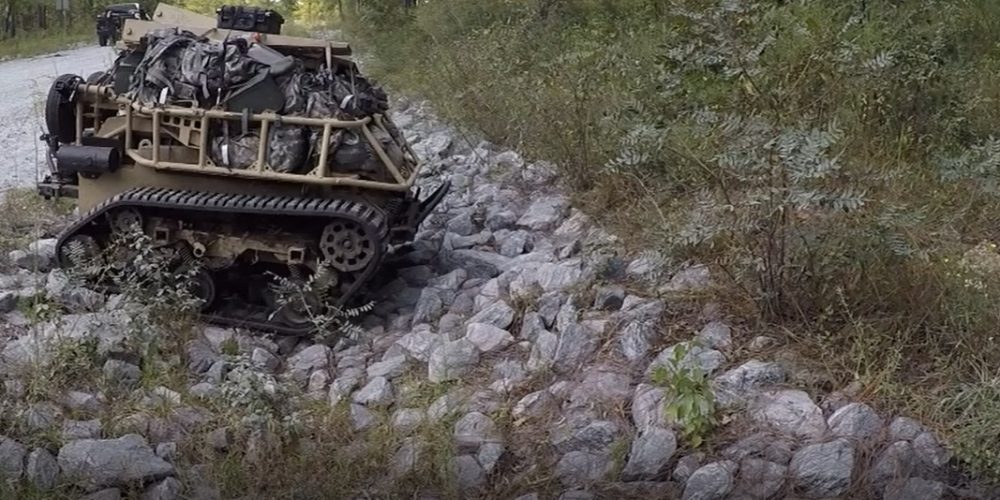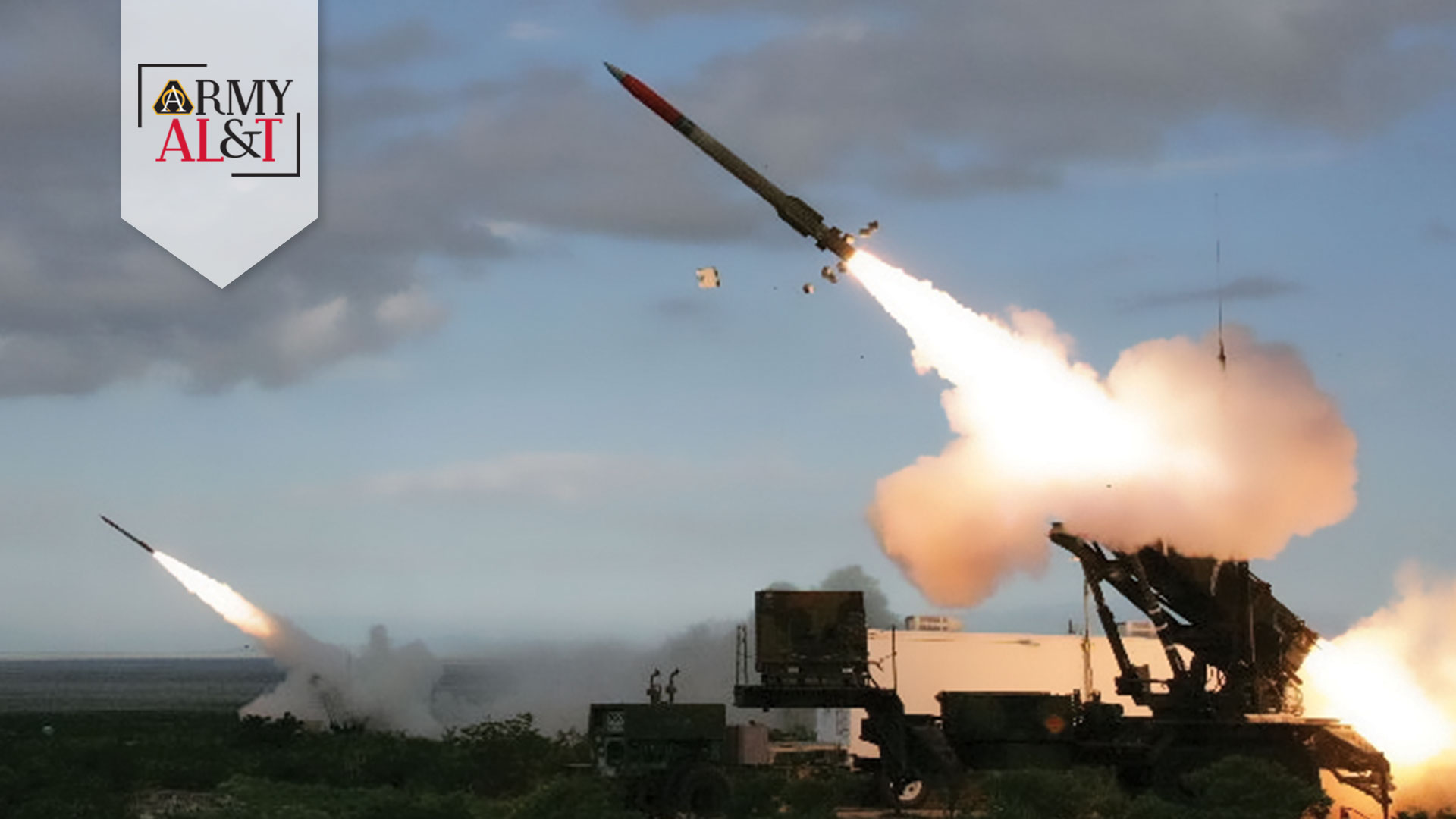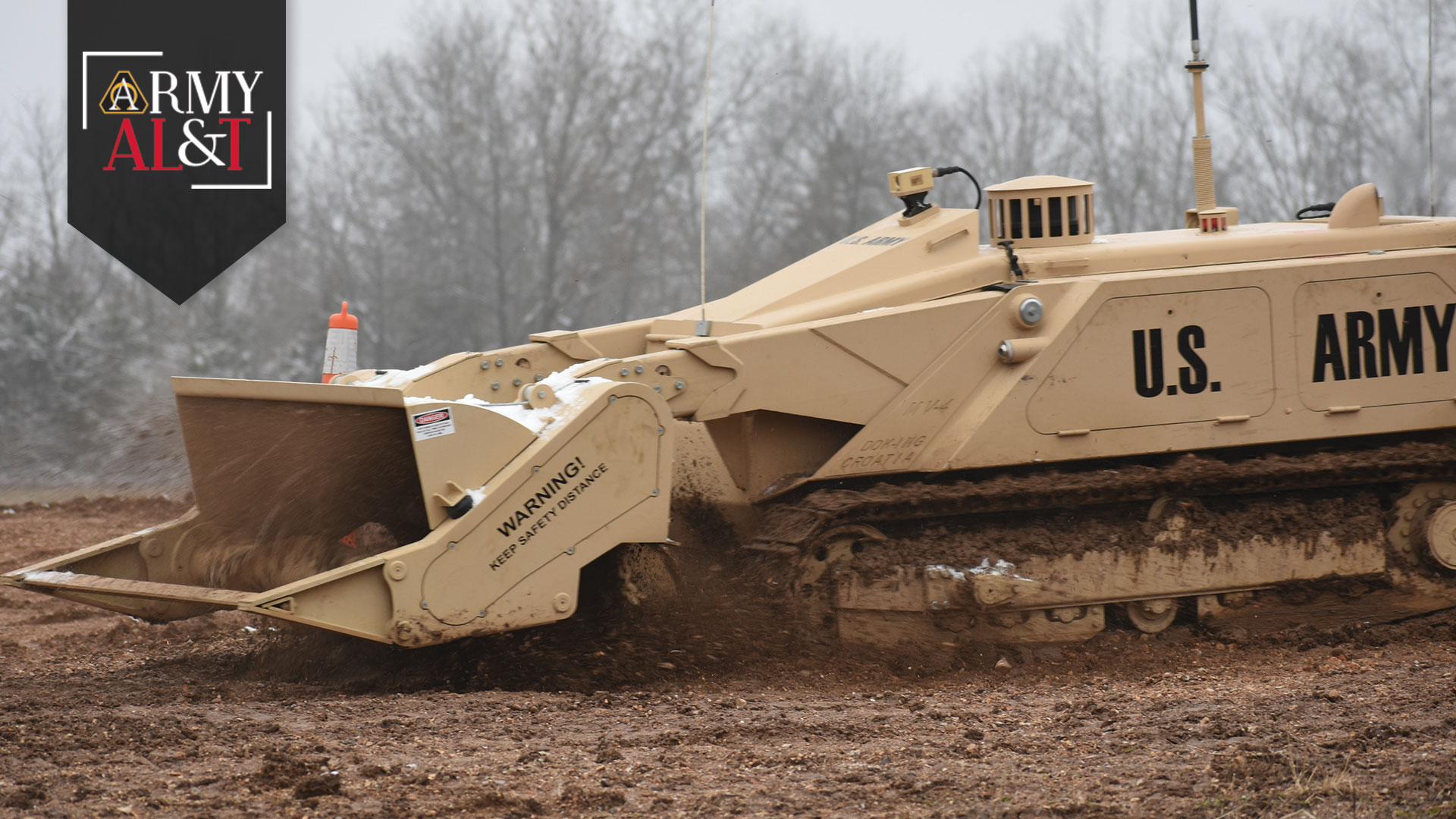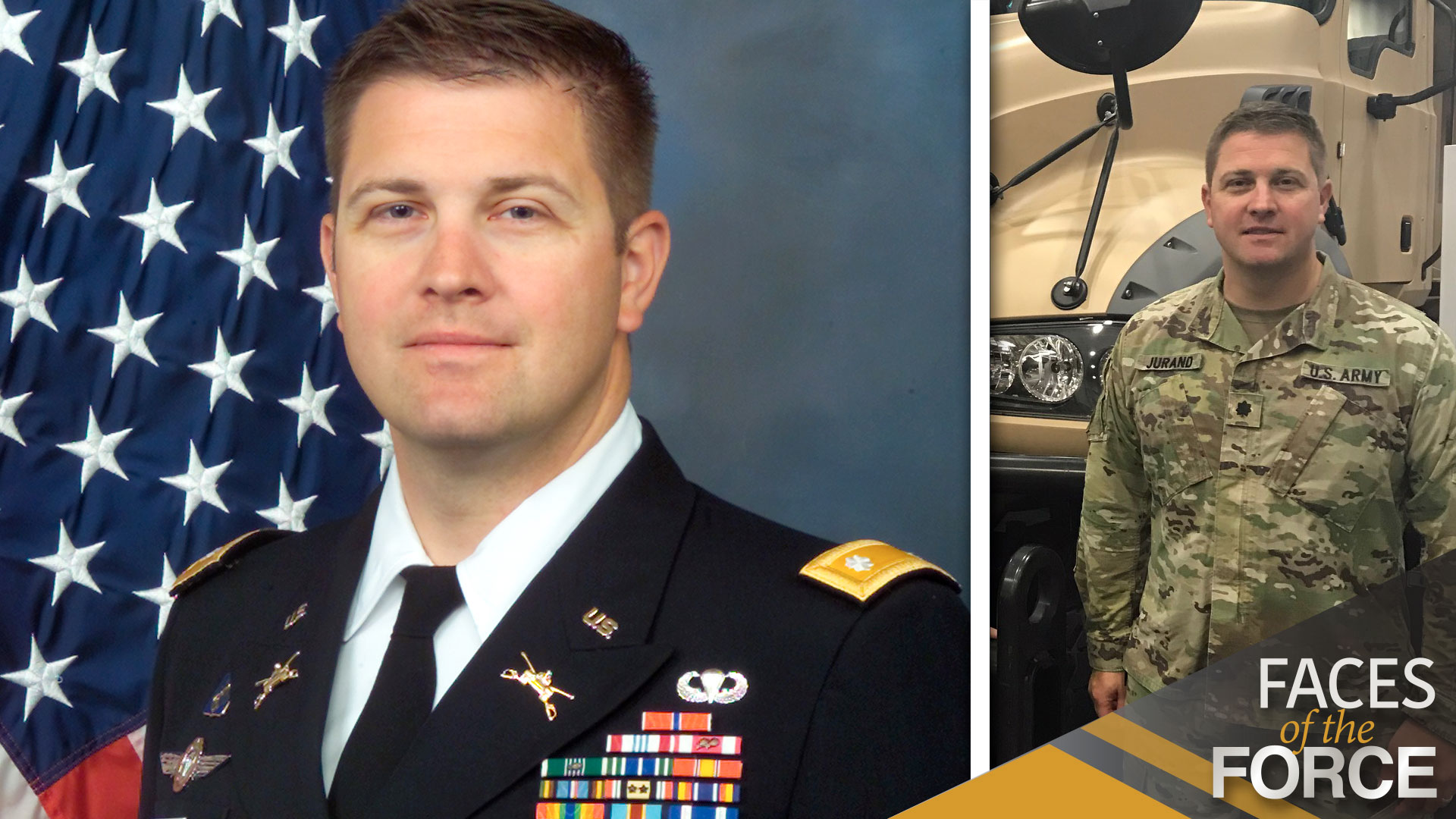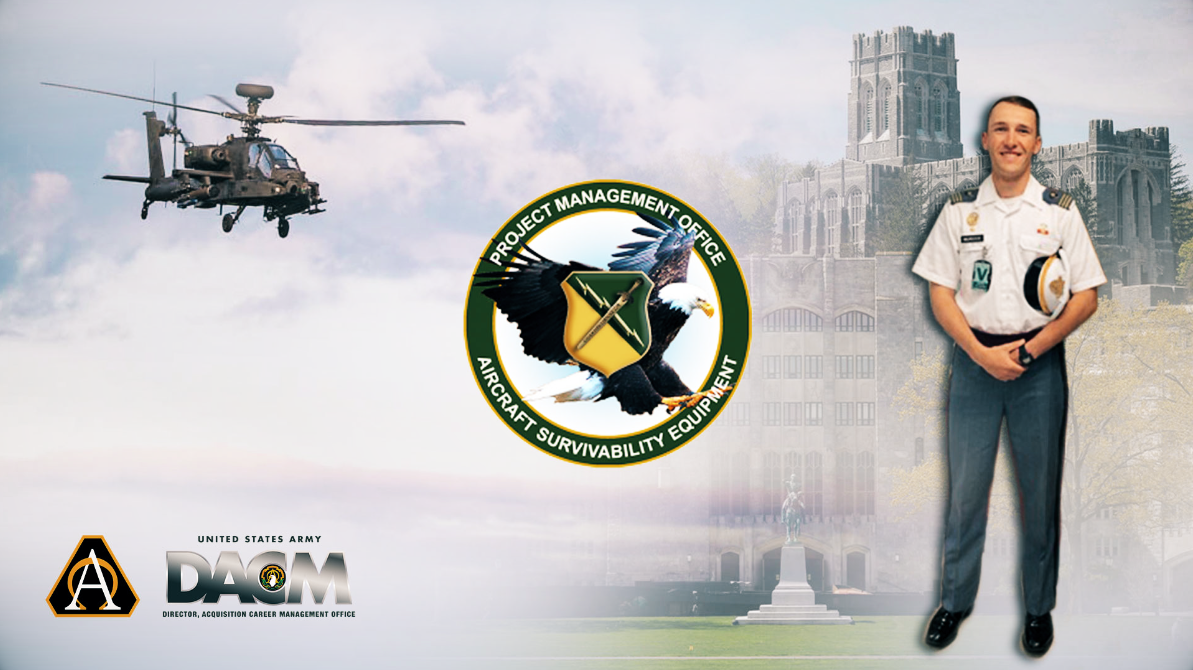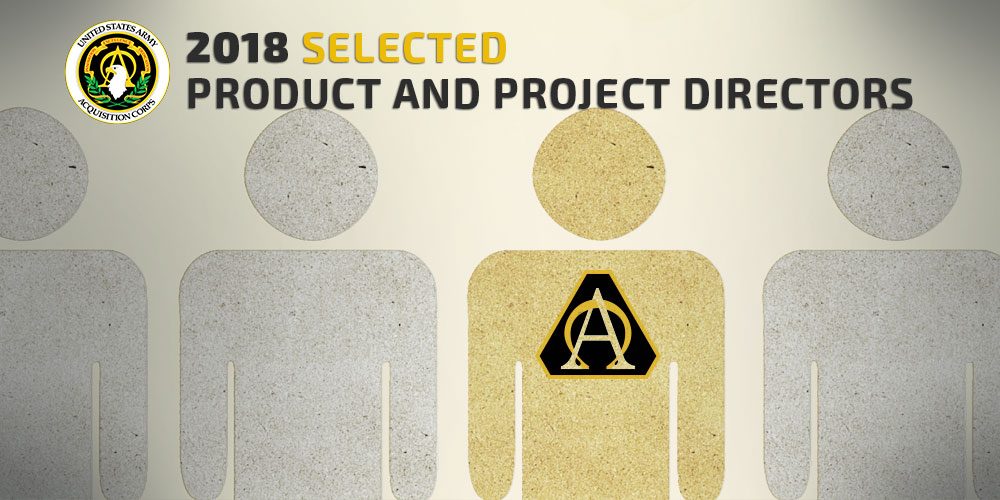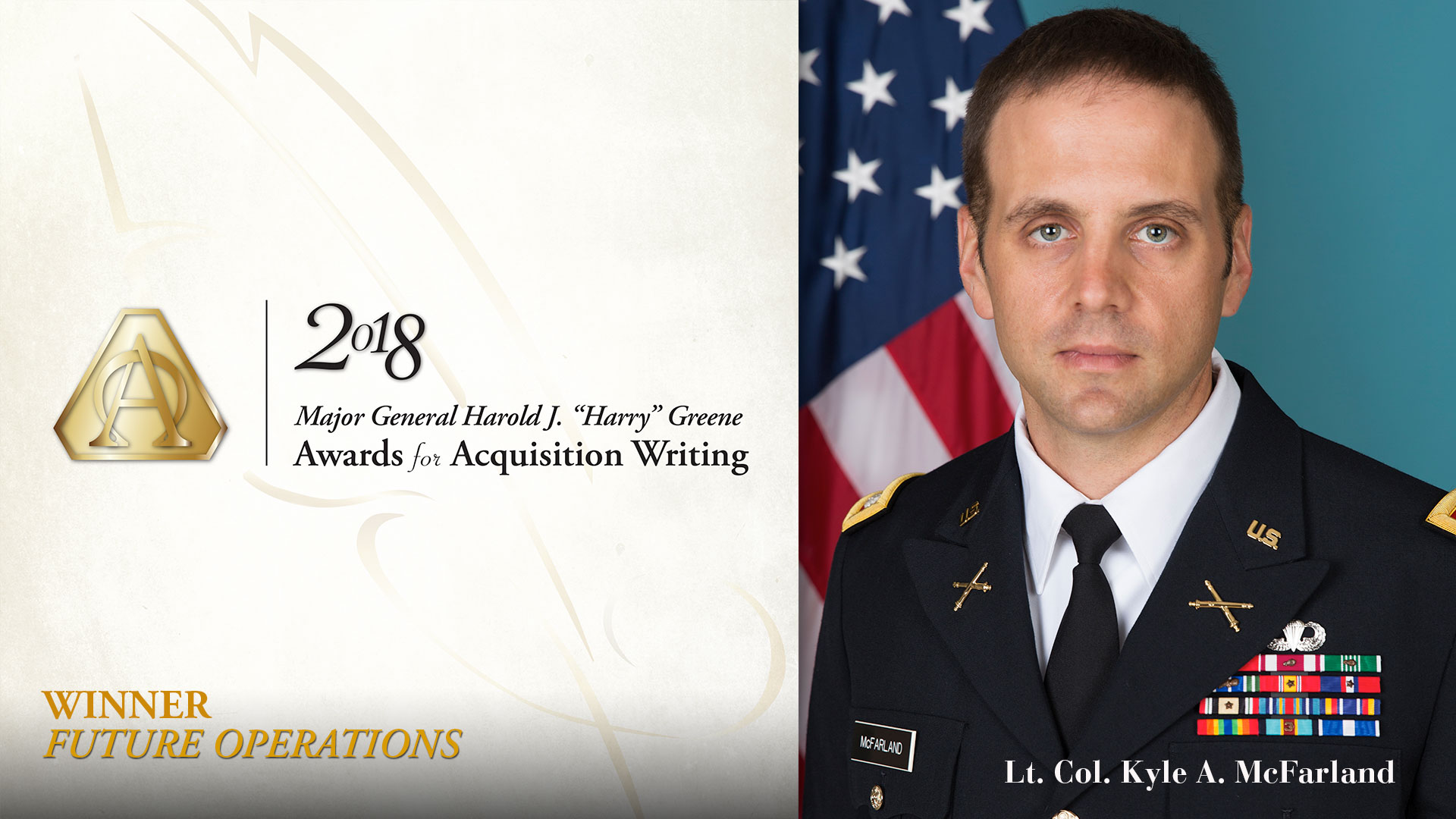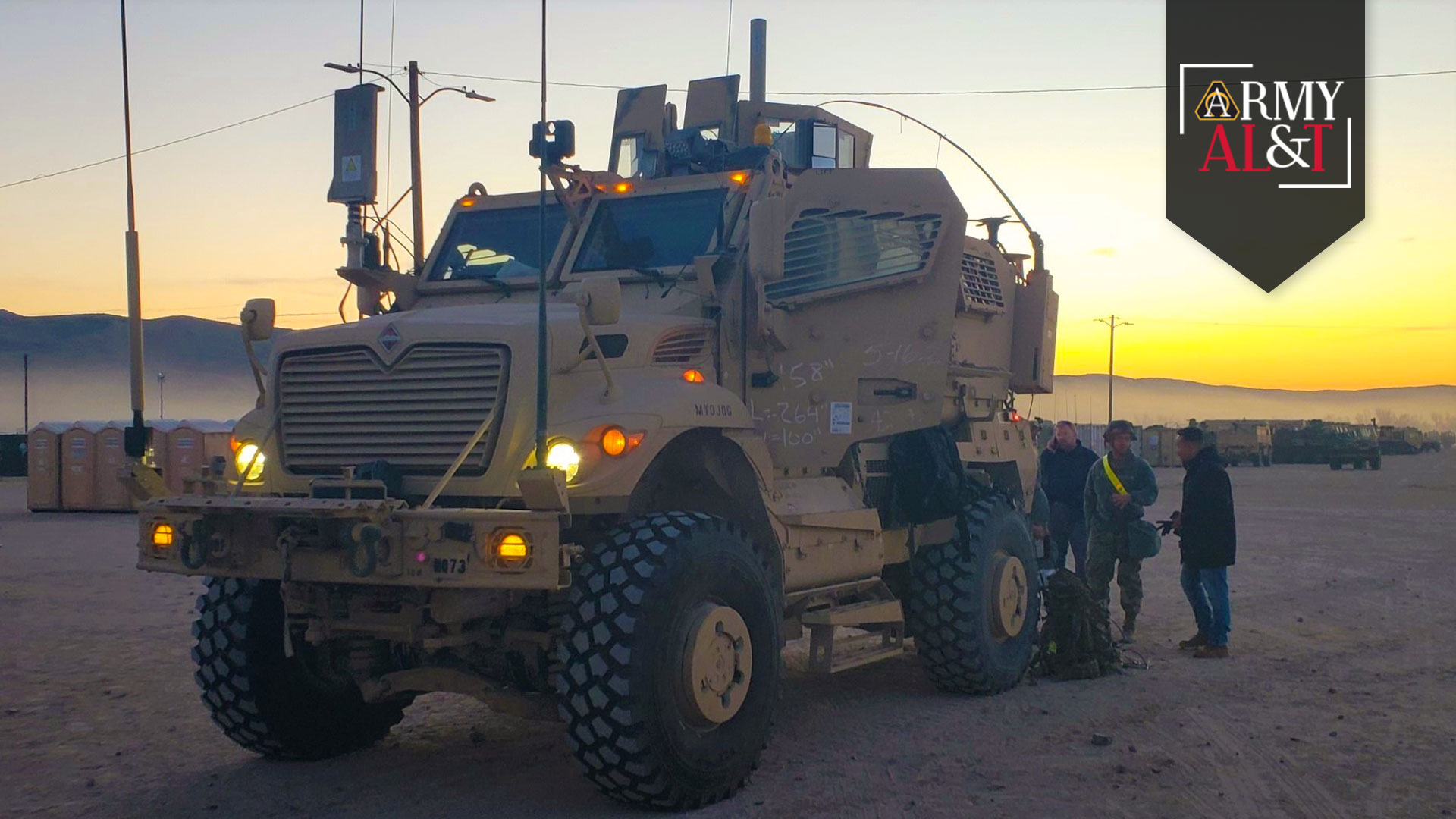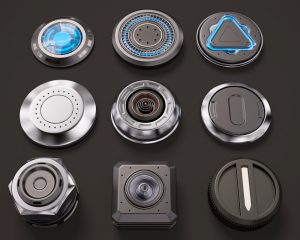PEO CS&CSS product management team utilizes OTA, technical demonstrations and Soldier feedback to speed acquisition of robotic ‘mule.’
by Ms. Angela Schubel and Capt. Erika Hanson
Current Army acquisition standards are simply unable to keep pace with the robotics industry’s rapidly advancing autonomous behaviors and use of technologies such as cameras, radios and sensors. At a time when commercial industry thrives on updates and the development of new technologies, the military struggles with the status quo. Further complicating efforts to modernize U.S. military equipment is a complex Federal Acquisition Regulation (FAR)-based approach to acquisition, which has resulted in technology that becomes obsolete before it is even in the hands of Soldiers.
In the words of Lt. Gen. Paul A. Ostrowski, the principal military deputy to the Army acquisition executive, “I’ve got to get that capability out there faster. I’ve got to think of innovative ways to do so.” Key leaders in Congress and DOD have recognized this deficiency in the acquisition process and have outlined initiatives to improve the timeline required to develop new capabilities and field them to Soldiers.
After years of collaboration with industry to define requirements and develop a system, on Jan. 19, 2017, the Squad Multipurpose Equipment Transport (SMET) capability development document went before the Army Requirements Oversight Committee Capabilities Board to validate the acquisition approach, entering as a milestone B program. The outcome of this meeting was direction to “get it done faster and cheaper.” As a result of this guidance, the SMET program, managed within the Program Executive Office for Combat Support and Combat Service Support (PEO CS&CSS), is effectively spearheading acquisition reform through innovations in the process.

The SMET system developed by General Dynamics Land Systems (GDLS) negotiates terrain during the SMET Phase I Assessment in September at Fort Benning, Georgia. GDLS’ system is one of four chosen for the Phase II technology demonstration. Also taking part are HDT Global, Howe and Howe Technologies Inc. and Team Polaris (Polaris Industries Inc., Applied Research Associates Inc. and Neya Systems LLC). (U.S. Army photos)
AN UNCONVENTIONAL APPROACH
Lt. Gen. John M. Murray, deputy chief of staff, G-8, signed the SMET directed requirement on April 14 with three basic requirements for the system:
- Carry up to 1,000 pounds of Soldier load;
- Operate for 60 miles within 72 hours;
- Have a silent run-capability generating 3 kilowatts of power when stationary and 1 kilowatt while moving.
The SMET program aims to lighten Soldiers’ loads by providing infantry brigade combat teams (IBCTs) a robotic “mule” capability. By unburdening Soldiers of some of their physical load, the SMET improves their physical and cognitive capabilities. Future capability will feature modular mission payloads tailoring the SMET to specific mission needs, such as dismounted engineer mobility systems; remote weapon stations; casualty evacuation; and unmanned aerial systems and reconnaissance.
PEO CS&CSS’ Product Management Team for Applique and Large Unmanned Ground Systems (PM ALUGS), assigned to the Project Manager for Force Projection, undertook the challenge and developed a strategy using experimentation and technical demonstrations to streamline the acquisition process. Using an innovative contracting approach through an other transaction authority (OTA)—a flexible, responsive and collaborative tool designed to speed acquisition and modernization—the SMET team hosted an industry day and released a request for project proposals just six weeks after the directed requirement was issued.
Designed to alleviate contracting, communication and collaboration issues common to the FAR-based acquisition process, OTAs invigorate research and development by allowing the military to incentivize industry to team with nontraditional and small business partners. Using the National Advanced Mobility Consortium OTA in coordination with the Vehicle and Robotics Alliance Program Office of the U.S. Army Tank Automotive Research, Development and Engineering Center, this contracting mechanism has made it possible for the SMET to tap into the cutting-edge capabilities of nontraditional defense contractors and has embraced experimentation and assessment to inform and speed program decisions.
Under this OTA, PM ALUGS established a rapid acquisition strategy for SMET, implementing a two-phased approach. After a week reviewing proposals, PM ALUGS invited 10 industry robotic suppliers to bring their SMET candidate systems to a challenging five-day Phase I assessment at Fort Benning, Georgia, in September. In Phase I, contractors demonstrated their respective systems’ capabilities through rigorous 24-hour testing, which included off-road maneuvering, gap crossing, water fording, and testing on lateral and vertical slopes. Using the test data collected at the assessment, an evaluation team in one week applied OTA principles of open communication and “less paperwork is more” to select four system solutions for Phase II.

The system developed by Team Polaris moves through woods at Fort Benning, Georgia. The SMET Phase II technology demonstration strategy calls for issuing 16 systems from each of the final four designs to IBCTs that will train with the systems for one year. (U.S. Army photos)
The SMET Phase II technology demonstration strategy calls for issuing 16 systems from each of the final four designs to IBCTs. The IBCTs will train with the systems for one year with maintenance support from the vendors using commercial off-the-shelf operator manuals and training packages. Whereas in a typical acquisition strategy a limited user test occurs after a system contract award, this acquisition strategy will involve Soldiers early in the acquisition process to experiment with and assess the systems. The Soldiers’ feedback will influence system requirements and determine if current industry solutions will work. Thus it will directly define the requirements in the capability product document well before the Army decides to acquire or develop the final system design.
This yearlong technology demonstration also allows industry to continue to competitively develop robotic technology while the Army finalizes SMET system requirements. The Phase II technology demonstration incentivizes the four contractors throughout the event to advance their respective systems, leading up to the selection of one solution as the program of record at the end of the demonstration. This acquisition strategy provides for a competitive, technology-driven milestone development decision—moving right into a program of record, low-rate initial production solution just 18 months after validation of the capability production document by the Army Requirements Oversight Committee.

The SMET system developed by HDT Global overcomes an obstacle during the Phase I assessment in September at Fort Benning, Georgia. Using an OTA contracting approach, the Army’s SMET team within PEO CS&CSS will be able to move right into a low-rate initial production solution just 18 months after validation of the capability production document by the Army Requirements Oversight Committee. (U.S. Army photos)
CONCLUSION
The SMET is the benchmark for rapid acquisition within PEO CS&CSS. PM ALUGS has employed innovative methods for hosting an industry day, source selection and experimentation for requirements, thereby championing innovative acquisition processes. By implementing a strategy using a competitive OTA in lieu of an engineering and manufacturing development, FAR-based contract, industry and the Army are able to create an open and collaborative working environment during the establishment of program requirements and objectives.
Program requirements are not set at a micro level but rather at the macro level, giving industry the ability to provide a wide range of solutions not just for the Army, but with the Army. Working openly with industry, using currently available technology and employing nontraditional acquisition practices create a path to streamline acquisition while simultaneously confirming, through Soldier experimentation and feedback, that the requirement fills a capability gap.
For more information, go to http://www.peocscss.army.mil.
ANGELA SCHUBEL is the product officer for large unmanned ground systems in the PM ALUGS office. She holds an M.S. in engineering management from the University of Michigan and a B.S. in computer engineering from Oakland University. She has 17 years of experience in Army acquisition and is Level III certified in program management and systems engineering, and Level II certified in logistics. She is a member of the Army Acquisition Corps.
CAPT. ERIKA HANSON is PM ALUGS’ assistant product manager for the SMET. She has served in the North Carolina National Guard for 16 years and is a member of the T10 Acquisition Workforce. She is currently completing her M.A. in acquisition and procurement from Webster University and holds a B.A. in technical writing from the University of North Carolina. She is Level II certified in program management and Level I in facilities engineering.

